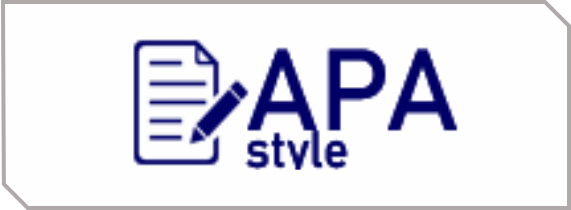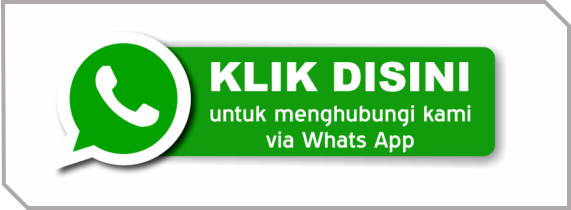Kajian Etnobotani Tumbuhan Jombang di Desa Sukamanah Kecamatan Pangalengan, Jawa Barat
DOI:
https://doi.org/10.47861/usd.v2i1.682Keywords:
Dandelion, Ethnobotany, Jombang, Medicinal Herbs, Taraxacum officinaleAbstract
Ethnobotany has a domain of study on the relationship between humans and plants, including the role of humans in understanding their interactions with the environment around their place of residence. Sukamanah Village is located in a beautiful area and is still very close to nature. Jombang plants are very easy to find because they are classified as wild plants. This study aims to determine the utilization of Jombang plants as traditional medicine in Sukamanah Village, Pangalengan District. Knowledge about the use of Jombang plants is obtained from generation to generation. The method used was interviews with descriptive and quantitative data analysis. The purpose of the study was to determine the utilization of Jombang plants. Jombang leaves are utilized by boiling and then the boiled water is consumed as a medicinal plant 81.25% for the stomach and 18.75% for the flu. 62.5% of them boiled the Jombang leaves directly, 25% dried the leaves first before boiling, and the last 12.5% boiled the leaves and roots. The use value (UV) of this plant is very low because the utilization known by the interviewees is small.
References
Ali, N. A., & Halimah, E. (2020). BERBAGAI AKTIVITAS FARMAKOLOGI TANAMAN JOMBANG (Taraxacum officinale Webb.). Farmaka, 18(1), 85-93.
Azhari, N. T. P., & Apriliana, E. (2016). Peranan jombang (Taraxacum officinale) sebagai hepatoprotektor. Jurnal Majority, 5(5), 32-36.
Badrunasar E. & Santoso HB. (2016). Tumbuhan Liar Berkhasiat Obat. Forda Press, Bogor
Bae, T. W., H. R. Park, Y. S. Kwak, H. Y. Lee, & S. B. Ryu. 2005. Agrobacterium tumefaciensmediated transformation of medicinal plant Taraxacum platycarpum. Plant Cell, Tissue and Organ Culture, 80: 51-57
Dalimartha S. (2008). Ensiklopedi tanaman obat indonesia. Jakarta: Dinamika Media
Destryana, A., & Ismawati, I. (2019). Etnobotani dan pengggunaan tumbuhan liar sebagai obat tradisional oleh masyarakat suku Madura. Journal of Food Technology and Agroindustry, 1(2), 1-8.
Díaz, K., Espinoza, L., Madrid, A., Pizarro, L., & Chamy, R. (2018). Isolation and identification of compounds from bioactive extracts of Taraxacum officinale Weber ex FH Wigg.(Dandelion) as a potential source of antibacterial agents. Evidence-Based Complementary and Alternative Medicine, 2018.
He, W., Han, H., Wang, W., & Gao, B. 2011. Anti-influenza virus effect of aqueous extracts from dandelion. Virology journal, 8(1), 538
Ivanov, I. G. 2014. Polyphenols content and antioxidant activities of Taraxacum officinale FH Wigg (dandelion) leaves. International journal of pharmacognosy and phytochemical research, 6(4), 889-893.
Jafar, J., & Djollong, A. F. (2018). Tumbuhan Liar Berkhasiat Obat Di Dataran Tinggi Kabupaten Enrekang. Jurnal Galung Tropika, 7(3), 198.
Jassim, A. K. M., Farhan, S. A., & Noori, O. M. (2012). Identification of dandelion Taraxacum officinale leaves components and study its extracts effect on different microorganisms. Al-Nahrain Journal of Science, 15(3), 7-14.
Jin, Y. R., Jin, J., Piao, X. X., & Jin, N. G. 2011. The effect of Taraxacum officinale on gastric emptying and smooth muscle motility in Rodents. Neurogastroenterology & Motility, 23(8), 766-e333.
Jedrejek, D., Lis, B., Rolnik, A., Stochmal, A., & Olas, B. (2019). Comparative phytochemical, cytotoxicity, antioxidant and haemostatic studies of Taraxacum officinale root preparations. Food and Chemical Toxicology, 126, 233-247.
Jeon, H. J., H. J. Kung, H. J. Jung, Y. S. Kang, C. J. Lim, Y. M. Kim, & E. H. Park. 2008. Antiinflammatory activity of Taraxacum officinale. Journal of Ethnopharmacology, 115: 82-88.
Kastolani, W., & Setiawan, I. (2018). PELATIHAN PEMANFAATAN LIMBAH KOTORAN SAPI DI DESA SUKAMANAH KECAMATAN PANGALENGAN KABUPATEN BANDUNG UNTUK MENDUKUNG PROGRAM CITARUM HARUM. Jurnal Abmas, 20(1), 79-85.
Kusuma W, D., Ekasari, W., Witono, J. R., & Purnobasuki, H. (2016). Toga Indonesia. Airlangga University Press.
Kisiel, W. & B. Barszcz. 2000. Further sesquiterpenoids and phenolics from Taraxacum officinale. Fitoterapia, 71: 269273.
Lenaini, I. (2021). Teknik pengambilan sampel purposive dan snowball sampling. Historis: Jurnal Kajian, Penelitian dan Pengembangan Pendidikan Sejarah, 6(1), 33-39.
Mir, M. A., Sawhney, S. S., & Jassal, M. M. S. (2013). Qualitative and quantitative analysis of phytochemicals of Taraxacum officinale. Wudpecker Journal of Pharmacy and Pharmocology, 2(1), 1-5.
Nurdiani, N. (2014). Teknik sampling snowball dalam penelitian lapangan. ComTech: Computer, Mathematics and Engineering Applications, 5(2), 1110-1118.
Petkova, N., Ivanov, I., Topchieva, S., Denev, P., & Pavlov, A. (2015). Biologically active substances and in vitro antioxidant activity of different extracts from dandelion (Taraxacum officinale) roots. Scientific Bulletin. Series F. Biotechnologies, 19, 190-7.
Setiawan, H., & Qiptiyah, M. (2014). Kajian etnobotani masyarakat adat suku moronene di Taman Nasional Rawa Aopa Watumohai. Jurnal Penelitian Kehutanan Wallacea, 3(2), 107-117.
Schutz, K., R. Carle, & A. Schieber. 2006. Taraxacum -A review on its phytochemical and pharmacological profile. Journal of Ethnopharmacology, 107: 313 -323
Syamsuhidayat S, Hutapea J R. (2003). Inventaris tanaman obat. Jakarta: Balitbangkes Depkes RI
Tadjudin, H. D. S., Shofiah, M. S., Aini, S. A., & Darmawan, A. (2020). Penggunaan dandelion (Taraxacum officinale) dalam pakan terhadap performa kalkun (Meleagris gallopavo). Jurnal Ilmu nutrisi dan Teknologi Pakan, 18(1), 19-23.
Tardio J, Pardo-de-Santayana M. (2008). Cultural Importance indices: a comperative analysis based of the useful wild plants of Southerm Cantrabria (Northem Spain). Econ Bot 62: 24-39
Tettey, C. O., Ocloo, A., Nagajyothi, P. C. N., & Lee, K. D. 2014. An in vitro analysis of antiproliferative and antimicrobial activities of solvent fractions of Taraxacum officinale (Dandelion) leaf. Journal of Applied Pharmaceutical Science. Vol. 4 (03), pp. 041 -045,
Tilaar, D. M. (2017). The power of jamu: kekayaan dan kearifan lokal Indonesia. Gramedia Pustaka Utama.
Walujo, E. B. (2017). Sumbangan ilmu etnobotani dalam memfasilitasi hubungan manusia dengan tumbuhan dan lingkungannya. Jurnal Biologi Indonesia, 7(2)
Widayanti, E., & Supriyati, N. (2019). Identifikasi Tanaman Jombang (Taraxacum Officinale) Yang Tumbuh Di Batu Malang. Jurnal Ilmiah Sains, 19(1), 41-45.
Winarti, W. I. W. I., Djamil, R., & Yuniasari, I. N. D. A. H. (2007). Identifikasi Senyawa Flavonoid dalam Fraksi n-Butanol Taraxacum officinale, Asteraceae. Ikatan Apoteker Indonesia, 5(2), 59-66.
Yarnell E, Abascal K. (2009). Dandelion (taraxacum officinale and t mongolicum). Integrative Medicine. ; 8(2):306-12.








